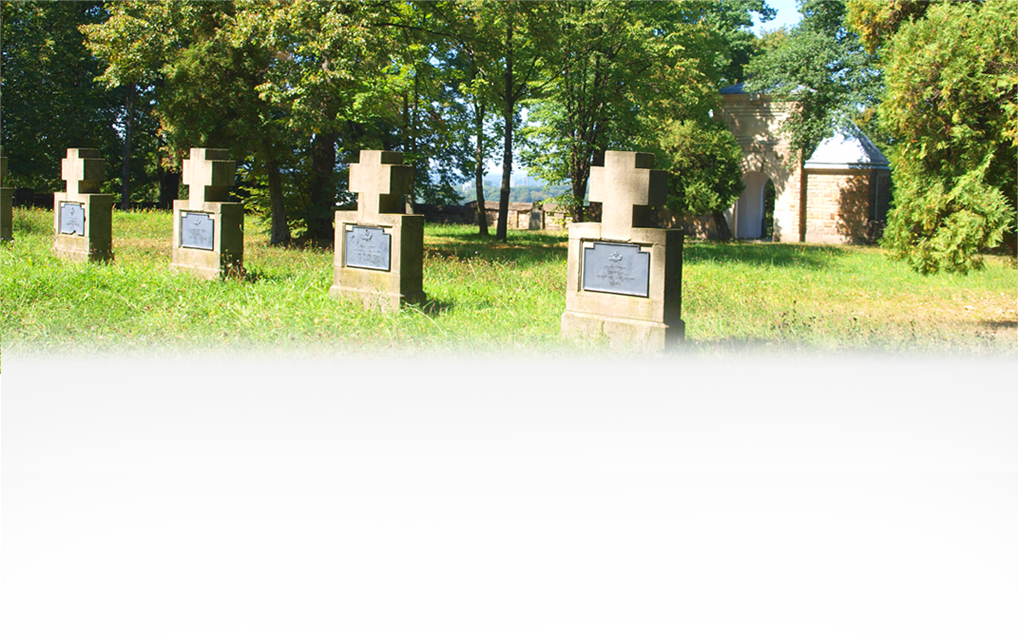The war cemetery is adjacent to the municipal cemetery. It was established on a plan of a quadrangle and is fenced with metal segments suspended on concrete posts surmounted with spheres, connected by a wall base. The entrance, located on the western side, is closed with a single-wing gate of metal rods. The cemetery is divided into two parts, the northern one is dedicated to soldiers of the Red Army who were killed in 1945 and the southern one - to other soldiers and prisoners of war. The central part of the cemetery constitutes a small round yard paved with granite - “Clock of the times." On its perimeter, there are 12 granite boulders with inscriptions, ten of which are dedicated to soldiers of individual nations, one is dedicated to civilians of all nationalities, and one commemorates the Unknown Soldiers.
At the end of the alley, there is a historic cross and on its both sides, there are three information boards presenting the history of the cemetery transformations.
In the section of the Red Army soldiers of World War II, there are tombstones in the form of obelisks and concrete blocks truncated towards one side. In the section dedicated to the other soldiers buried in the cemetery, there are tombstones of various types, individual graves and wrought Latin and two-barred crosses placed on concrete plinths, as well as stone crosses.
The cemetery was established at the military hospital of the Austrian 56th Infantry Regiment in 1849. During World War I, 1,206 soldiers were buried here. From November 1918 to 1921, about 2,160 people were buried in the cemetery, including prisoners of war from the Red Army, prisoned and interned Ukrainians, soldiers of the Polish Army, and Lithuanian prisoners. In the 1930s, the graves were consolidated, and the cemetery area was reduced.
A group of civilians from Andrychów, who died in September 1939, were also buried in the cemetery. In 1945, when the front had moved, Soviet soldiers were buried there. As a result of exhumations performed in the Wadowice region, 1,498 Red Army soldiers from World War II were buried in the cemetery.
